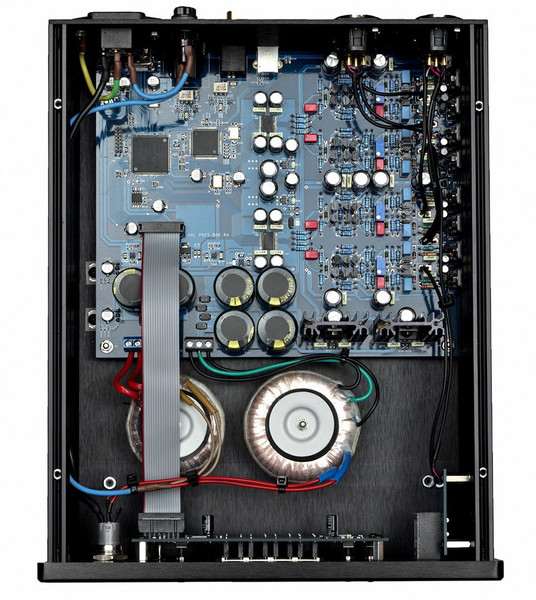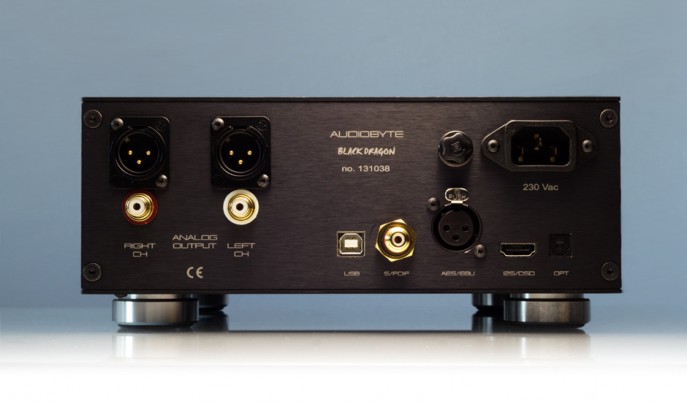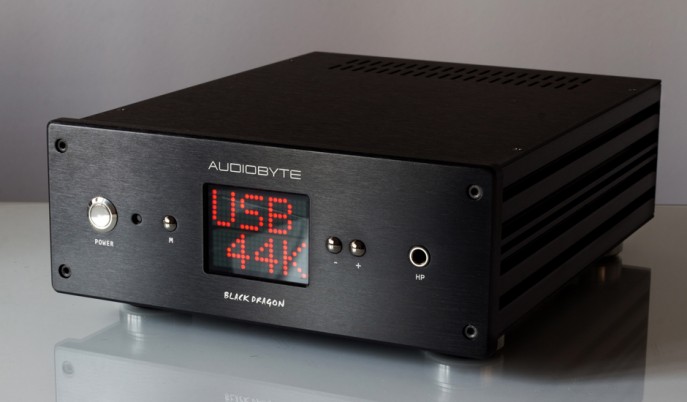European companies have been on a roll lately with neat products designed for personal audio. There are a slew of digital-to-analog converters, music servers and amplifiers coming out quite regularly. Manufactures are taking advantage of the enormous growth in this exciting segment of high-end audio. Many designers are replacing digital chips with field-programmable gate array or FPGA designs. Digital has come a long way from when Sony first introduced the compact disc format. We are finally realizing some of the sound which Sony was trying to achieve in the mid eighties when they proclaimed “perfect sound forever” which many of us were excited about and then disappointed when early CD sound was filled with noise and distortion and a major step backwards in audio reproduction.
FPGA are integrated circuits that a designer programs after the product is manufactured. Many designers find that FPGA design have a sound that is more analogue than digital. The successful launching over the last few years have brought better sounding digital devices that sound musical and have made significant improvement in tonality and musicality. Absent is that early digital nastiness and the products have become much better with noise reduction. USB implementation in the industry is making major strides towards giving a music enthusiast their dream towards ultimate sounding devices. The AudioByte Black Dragon use FPGA technology in their current designs. The Chord Hugo and PS Audio Perfect Wave DAC and others also have products using similar technology.
Design
Nicolae Jitariu who designed products for MSB and Goldmund is the owner of AudioByte located in Romania and is designing many different digital products. The Black Dragon was designed using a digital front end that implements a Xilin FPGA chip. The front end has a digital receiver and can sample input stream to 500MHZ to strip audio data. It also is a dual digital PLL re-clocking device. Nicolae trickled down much of the technology from the flagship $20,000 Rokna Wavedream design and implemented in in the Black Dragon.Using the technology with dual AK4396 chips in a mono-mode. The chips incorporated a differential push pull analogue stage that is powerful enough to drive most headphones easily. The Black Dragon put out 700mw into 32 ohms and also has a gain adjustment to adjust for different headphone impedances.

The Black Dragon also can up-sample. The sophisticated Fematovox clock system allows jitter reduction to a low 300fS right before it enters the DAC . According to the published specifications located on the companies website, the Dragon has true balanced conversion and provides better analog performance using the fully discrete built in amplifier. The Black Dragon can be full updated by AudioByte using firmware.
The Black Dragon incorporates an attractive black chassis. The Dragon has a high speed USB type B connection and offers coaxial 75 ohm coaxial for people using transports that will feed CD’s to the DAC . AES and Toslink connections are all standard. The Dragon only offers a single ended input so using 4pin XLR inputs is not an option. Included with the package is a remote control.
Equipment
The Black Dragon was fully broken in demo unit that Stereodesk supplied. Hooking it up was easy and pretty straightforward. The Nordost 3M Heimdall USB cable was connected to the DAC and my iMac. The music library on my Mac has over 1500 Itunes lossless and high-resolution files that are decoded by Audirvana. Tidal was steaming lossless CD quality recordings during my audition.
Connecting the Black Dragon to the Rogue Cronus Magnum 11 amplifier driving my main system using the Fritz Carbon 7 monitors in the 2-channel system allowed me to evaluate the DAC separately. Using it in the main system was welcomed.The HiFiman HE-1000, Sennheiser HD800 and MrSpeakers Ether C were the primary headphones used during the audition. Music genres were mostly jazz, pop and large scale dynamic classical recordings.
Sound
When I audition products I have some favorite tracks I like to use to give me a good sense of what a component does or does not do. One of my favorite vocal tracks is Holly Cole’s “The Train Song” from her stellar Temptation album. Holly’s vocal is seductive and the track has terrific bass and treble extension. The acoustic bass is to the left of Holly in the soundstage and the Black Dragon had excellent definition and excellent texture with bass notes . Her vocal was floating in air and the space and air between the soundstage was first rate. I could hear all the inner detail on this recording whether I was using the HD800, HE-1000 or the Ether C.
The Fritz Carbon 7 speakers presented a wide and deep soundstage with analogue like delivery. The treble extension was detailed with extension and had no splashy sound and never sounding hard or grainy. The tambourine used in this song was floating in its own space.“Jersey Girl another track from the same album also had excellent bass and her vocal was as seductive and sounded a good as when I had see performed live on several occasions. While using the Ether C, I could hear all the bass definition with transparency and presence. The HD800 had a slightly different signature using the Dragon. At times I noticed a glare or slight brightness in the treble. The HD800 is a revealing headphone and can at times sound bright and in many instances tube amplification provides better performances, the Dragon with the HD800 was less preferable than the Ether C on this track which made listening more enjoyable.
Harry Connick’s “We are Love” album has a fantastic track “A Nightingale sang in Berkley Square” and features Branford Marsalis with a haunting Sax solo. Using the HE- 1000 the sax was floating in space with air and the imaging was spectacular. Noticeable when using the HE-1000 the volume control was much higher than other headphones that were used. There was a decrease in output power with the HE-1000 but it never faltered while using the Dragon amplifier, but the results with external and more powerful amplifiers paid huge dividends in better sound staging and a more explosive dynamic range. The HE-1000 welcomed the power that the Cavalli Liquid Gold was providing it and stepped up considerably.
The Black Dragon amplifier puts out a maximum 700mW into 32 ohms and the less efficient HE-1000 performs best with amplifiers that have high current and can deliver over watt or more of clean power. The Dragon still was able to drive it without running out of steam on jazz or acoustic recordings but was challenged during large-scale dynamic recordings. Connick’s vocal and Marsalis’ sax sounded live and organic. The HE-1000 had them hovering in space and gave me that out of head experience that I often get while listening to this magnificent headphone.
Listening to “Run with the Devil” from Doug Mcleod’s “There’s a Time” had Doug sitting on a chair with his guitar. The detail coming from his guitar was incredible. The track is also excellent for evaluation of depth and imaging. The vocal was also extremely well recorded at Skywalker Studios and engineered by Keith Johnson.Closing my eyes I could visualize Doug sitting on the chair and his hand moving up and down the strings of the guitar. The instrumental tonality was something very special indeed. Using the Ether C, the sound was transparent and musical. Doug’s haunting vocal was in the room during my session, The Ether C had me involved with the performance and musicality soared.
Listening the same track using the Black Dragon’s DAC with the Rogue Cronus Magnum 11 amplifier driving the Fritz Carbon 7 monitors the definition and spacing was special. The speakers completely disappeared. The room ambience from the recording was heard with definition and detail. It sounded as if Doug was performing in my listening room. The Black Dragon really came alive with this track and reproduced it with terrific musicality. Tonality of the guitar was lifelike and sounded like I was back in Denver where I heard him perform this track live.

Acoustic music and jazz recordings all sounded excellent. Classical music recordings with demanding dynamic range require amplification and components that have both speed and finesse. Using dynamic classical recording to see how the Dragon would perform while handling large-scale dynamic recordings was piking my interest. Seeking out the most difficult recordings may make me seem sinister in nature, but I really wanted to put this unit through its paces. The right recording for my mood and the ultimate challenge for any system went into the system. The large scale recording by legendary mastering engineer Keith Johnson may be its crowning glory or challenge it to see if it can handle the large dynamic swings masterful climax at the end.
Copland’s “Fanfare for the Common Man” on the Reference Recording Label has explosive and fast dynamic range. The enormous tympani whacks on this recording will test the capability of any component. Many amps I have used with this track lacked the speed necessary to reproduce the tympani whacks to make it believable.
The HD 800 is pretty easy to drive but as mentioned before can be very revealing. It is also an excellent transducer for classical music. The “Fanfare” came through with the tympani whacks easily identified and had the proper impact and the horns section was layered in space and definition. I could feel the tympani whacks and it was rattling my head. The sound was transparent with excellent layering and the stage had the proper air and space around the performers. The HD800 was able to keep up with this demanding recording and never faltered. Using the main system on that track with the Fritz Carbon 7 and the Rogue Cronus Magnum 11 had my rear listening room walls shaking and the bass could be felt in my chest. The DAC was able to reproduce this demanding track easily and made it sound live and exciting. The performance of the Dragon was both impactful and musical.
Feeling like a tiger on the prey I switched to the HE-1000 with the same torture test. The HE-1000 benefits using powerful amplification. When using the Cavalli Liquid Gold, connected to the Dragon’s DAC balanced 4 pin XLR the HE-1000 was spectacular and explosive. The combination was thrilling to listen too and I could hear everything in the recording. The thunderous bass made my head feel like it was exploding. The sound was definitely a WOW moment for me when using this combination.
Using the Dragons internal amplifier with the harder to drive HE-1000 was not as impressive though. The recording sounded somewhat flat in comparison and had a hard time coming to life. The power was the major deficiency with these headphones. The amplifier had trouble driving the HE-1000 to the same explosive level .The Cavalli Liquid Gold which in itself retails for $4000 is not a fair comparison but was able to show what the Black Dragon DAC was capable of producing. The Dragon DAC stepped up performance and musicality considerably.

The Black Dragon is in the same price class as the Chord Hugo. The Hugo rated at 750Mw is similar in power output to the Dragon. The Hugo while using the HE-1000 was able to reproduce the “Fanfare” track. The Hugo sounded like it had more power than the stated 750mW and did not falter or collapse while using the HE-1000. Even though the power rating was similar, the Hugo seemed to be delivering more current and the HE-1000 never struggled reproducing the demanding dynamic passages.
Using the HD-800 with the same “Train Song Track” had a warmer and more analogue sound than the Dragon and notably missing was the glare in the treble that was apparent on the Dragon. The Chord also is smaller and can be used portably with either full size headphones or in ear monitors for people on the go. Both products are priced at $2500. The Dragon offers more inputs for using it a main DAC in your 2 channel or even multichannel systems while the Hugo is designed for portability.
Conclusion
Designing a good quality digital-to-analog converter was Audiobyte’s goal for the Black Dragon. The headphone amplifier was not the top design priority yet when Nicolae heard the amplifier he was impressed with its performance. Based on the company goals the Black Dragon hit most of the boxes I check for top tier performance products.
Comparing the Chord Hugo there were noticeable differences. The Black Dragon was brighter and had less warmth . The Hugo had a warmer more analogue sound with similar power ratings, however the Hugo delivered more current and seemed to have more power. I would have liked to see more power coming from the Black Dragon’s headphone amplifier. Sound signature is subjective and many listeners prefer a brighter overall sound from their electronics.
Careful headphone selection needs to be done while using the Dragon. The low power is not ideal for headphones that require high current and more power. The DAC section used separately never faltered in performance and using external amplification rewarded my listening sessions with excellent musicality. The DAC’s detail retrieval was excellent. Bass and vocal reproduction was outstanding. The treble never sounded harsh yet on certain recordings could be a little on the brighter side.
The stellar sound coming from the Fritz Carbon 7 monitors was indeed special. The Rogue Cronus Magnum 100W drove the speakers to incredible heights and the Dragon conveyed everything in the recording with explosive an extended bass and the treble was fully extended. If you in the market for a first class DAC the Dragon will deliver stellar performance.
Using the systems as a headphone amp/DAC combination requires careful system matching. Most headphones will be easily driven but more demanding headphones that require high current or power can present a challenge to the Dragon. Smaller scale recordings like acoustic, jazz and folk recordings will present less of challenge and are easily reproduced. If you in the market for a top tier DAC the AudioByte Dragon preformed admirably and merits your consideration.
SOLD in USA:
Manufacturer















Want to join discussion?
Feel free to contribute!